Keurig Troubleshooting: Methods, Tips & Tricks
So you’ve got a Keurig, and it’s not brewing as it should?
Figuring out and learning how to carry out Keurig troubleshooting is essential but annoying if you’ve not got a checklist to follow.
Below we run through the most common variety of Keurig problems and give you the tips to solve them without breaking a sweat.
Let’s get your Keurig machine brewing properly again!
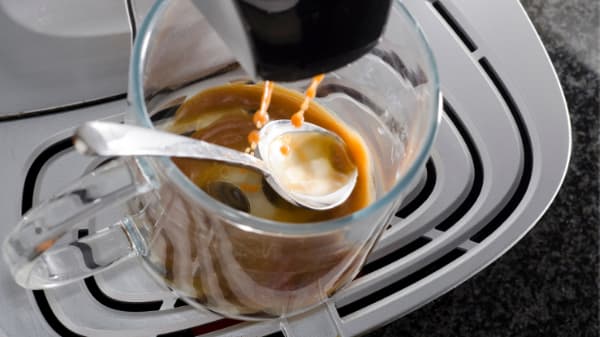
How To Reset Keurig?
Whenever you have a problem with your Keurig coffee maker, it’s good to start with figuring out how to reset your machine. It might be a simple electrical problem or software in the case for newer machines, but in some cases, a quick reset will have you drinking a cup of coffee again in no time.
Resetting a basic Keurig machine or a Keurig 1.0 is simple and doesn’t involve any complicated steps compared to a more expensive coffee brewer.
1. Open and close the K-Cup lever
Sometimes the problems with your Keurig can dissapear simply by opening and closing the lever for the K-Cup container. Yup, it sounds simple enough, but it works sometimes!
This method usually interrupts the machine’s brewing cycle allowing you to restart brewing a new cup of coffee.
2. Shut down the machine and unplug it
If that fails, you can also try closing down the Keurig coffee maker completely and unplug it from the power source.
Let the machine rest for an hour or two before restarting it. This also applies if you think your coffee maker is overheating.
3. Remove the detachable water reservoir
Once you’ve unplugged the machine, you can also remove the water tank as the problem might be related to the machine’s water pump.
4. Re-attach the water reservoir and plug in and turn on the coffee maker
Once you’ve let some time pass, re-attach the water tank and plug the machine in. Simply press the On or Start button, and you’ll brew a delicious cup with your trusty Keurig in no time.
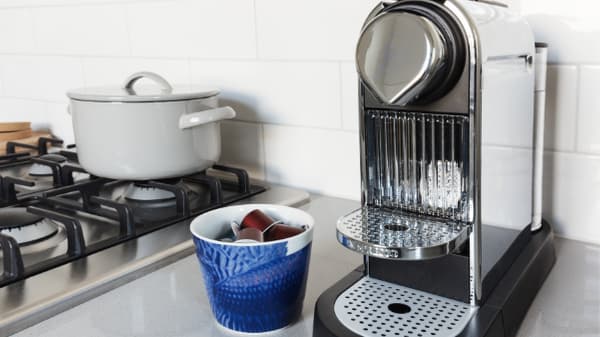
Reset 2.0
If you have the more advanced Keurig 2.0, you might need to do some extra steps in resetting your coffee maker. These machines use digital displays and computer components which means you’ll have to be more meticulous in your approach. Follow the steps below Instead:
1. Check your settings
Like with any other digital device, the first thing you should do with your Keurig machine is to check the settings.
Do a quick scan off the menu and reset any settings that you don’t prefer using. If you want to get an in-depth look on the features of your coffee maker and see which one is the perfect fit for your needs. Always check the user’s manual if you’re unsure.
2. Resetting the machine
Like the more simpler Keurig models, resetting your 2.0 follows the same steps.
Remove the water reservoir before unplugging the machine. Wait for at least 5 minutes before plugging the machine and turning it back on. Fill the water reservoir and make sure it’s seated properly. To a quick brew cycle, check if everything is correct and start brewing once again.
Some models like the Keurig B60 or other machines with digital displays have their own steps to reset the machine. If you have one of those coffee machines, just simultaneously press and release the small and medium mug buttons.
Immediately after, press the menu button three times consecutively. Press it once more and you should see the display show “Brew 0:00“
Hopefully, you can get your Keurig up and running after these steps but if resetting your Keurig coffee maker doesn’t work, there might be other underlying issues with your machine.
If you’re still struggling to brew correctly, check out our solutions for common Keurig problems listed below:
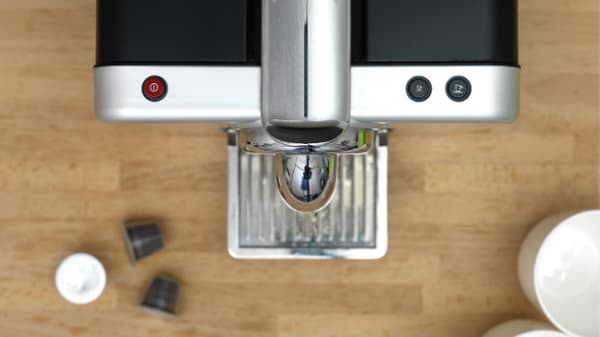
My Keurig Is Not Brewing Coffee?
Like with any other coffee maker, your Keurig needs to be properly maintained for it to run in tip-top condition. Sometimes there might be some issues concerning the components or maybe the water reservoir and water lines are clogged.
It’s best to learn the common Keurig troubleshooting and maintenance techniques. Always keep in mind to check the machine’s manual before anything else to help you diagnose the problem.
Some of these common issues can also apply to other coffee brewers, which can be handy if you use other makes and models as well.
My Keurig Is Clogged With Too Much Debris and Scale Build Up
If you notice that your Keurig coffee machine takes a bit more time when brewing a cup of coffee, it might be because of debris or build-up that’s slowing down your water flow.
First off, you can try to run the machine without using any K-Cups to check if there are any loose coffee grounds lodged in the brew head. Additionally, you can also use a soft brush to clean out any coffee residue found on the dispenser.
Clear Your Water Pump By Descaling
Still finding that your Keurig takes a while to brew your coffee? It might be time to descale your machine.
One of the common problems with electrical coffee makers is that with enough brew cycles, there can be a mineral build-up of limestone, calcium, and magnesium that accumulates in the machine’s boiler and water lines. This build-up naturally occurs from the water that you use to brew your coffee with.
You’ll notice this if your coffee tastes terrible, especially if you only use one type of K-Cup for your regular brew. Another telltale sign that there’s a limestone buildup is cloudy water from the dispensing head.
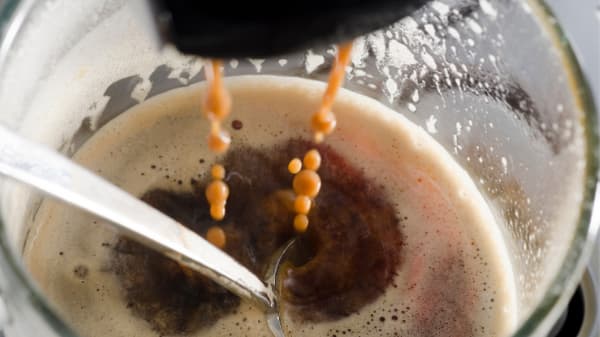
The calcium scaling can have an adverse effect in the quality of your brew, and it can also lead to an over-extracted cup of coffee as the machine has a slower rate of pumping water to your coffee grounds.
It’s annoying, but cleaning or descaling your water line is very simple and should only take a few minutes.
You can have the option to purchase descaling powder, tabs, or liquid to break down the minerals.
Just place in water and the recommended amount of solution in the water reservoir and let your Keurig run for a brew cycle or two. Afterwards, purge or let your Keurig brew with just water to ensure no solution is left in its lines.
To learn more check our our Keurig descaling guide.
DIY With Vinegar
If you’re in a rush, there is also a home remedy you can use. Vinegar water is a good and cheap alternative if you want to descale your coffee maker. It might not be as strong compared to descaling solutions, but it does provide a good band-aid solution for the calcium scaling in your Keurig.
Just mix equal parts of vinegar and water inside the water reservoir and let the machine run until you notice an increased rate with your Keurig coffee maker. Once you’ve depleted the vinegar water, keep purging your coffee maker with fresh water until the smell dissipates.
It might take a while to purge the vinegar, but if you want to be sure after a few cycles, you can brew a test coffee just to see if there are any smells or flavors that linger. Make sure to completely clean the reservoir as well to avoid any unwanted flavors in your coffee.
There can also be an instance where loose coffee grounds or cocoa mix can clog the dispensing line. You can use a paper clip to remove any debris from the exit needle. Alternatively, you can use a straw to blow away any blockages. Fun!
With that said, these methods are not recommended by the manufacturer so feel free to chime in with the Keurig customer service team to find out the best way to clean the machine’s dispensing line.
My Keurig Not Dispensing Water
Another problem you might find with your Keurig is that its pump attempts to dispense water to its lines and your K-Cup but cannot do so.
This might be due to your water reservoir. Not only do you have to maintain your Keurig’s boiler and water line, but you’ll also need to make sure that your water tank is clean and debris-free.
In some models, you can get an error message that can notify you to add more water to brew your coffee.
It should have enough to brew one full dose of coffee but to be sure, fill up your water reservoir to its maximum amount and try to brew. If you still see an error message, it might be time to clean your tank.
Detach the water reservoir and wash it thoroughly with soap and warm water. Keep in mind that the tank is not dishwasher-safe, so handwashing is highly recommended. Once you’ve cleaned it sufficiently, dry it using a non-abrasive cloth to avoid any scratches inside the reservoir.
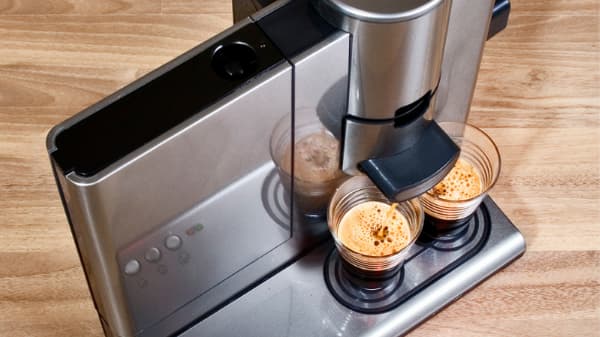
Take note to carefully clean the water filter, as well as it can help in keeping the machine’s line debris free. In some cases, you might need to replace the filter, a good time would be every 3 months, but if you drink more than just a cup a day, every 2 months is highly recommended
Fill the tank once again up to the maximum amount and place it back in the brewer. Ensure the water reservoir is seated correctly in the brewer as it may have a hard time detecting water levels otherwise.
Still getting an “add more water” error message? Damn! In this case, it’s best to report it to Keurig’s customer care as there might be an underlying problem with your brewer that only the manufacturer can fix.
My Keurig Not Heating Water
Ever found yourself in a situation where your Keurig coffee maker brews room temperature coffee? There might be a problem with its pump or it might be overheated from repeated use.
Like all the other troubleshooting solutions, your Keurig might need some cleaning, especially when there are blockages in the line that can decrease the efficiency of your pump. Ensure that there are no loose grounds along the water lines and brew head of your coffee maker.
If the boiler is still not up to scratch, you can push and hold the machine’s brew button for at least 5 seconds. This resets the pump, making it work at 100% efficiency. Let your Keurig rest for a bit to avoid straining the boiler before brewing your coffee.
Issues with the pump can also strain the machine’s boiler, leading the machine to shut down from overheating. This can also cause a problem with some of the machine’s internal components, so keep an eye out if the overheating issue happens frequently.
You can also either have the “add water” error message listed above, or your pump might need replacement. So take note to keep your reservoir and lines in good condition to avoid any headaches with your brewer.
The problem still ongoing? It’s better to check in with the Keurig customer care center to help with any additional support or replacements.
Trapped Bubbles Of Air
Another common problem with Keurig coffee machines are that they tend to trap air bubbles within their water lines.
This can disrupt water flow which can have an adverse effect on your water pump and, consequently, the quality of your K-Cup coffee.

It’s Usually A Water Reservoir Issue
To get rid of those pesky air bubbles, all you need to do is first turn off and unplug your coffee brewer. Remove the water reservoir gently and hold the brewer upside down. Firmly hit the side of the machine to dislodge any air bubbles.
Alternatively, you can fill the water reservoir to its highest level and gently shake the machine to eliminate any trapped air within its dispensing line. Make sure to turn off and unplug the machine first beforehand, of course.
You can also use a straw to dislodge any bubbles if you’re a bit anxious about hitting your Keurig.
Afterwards, complete a brew cycle with water just to check if there’s any remaining bubbles in the water line.
Coffee Maker Components Out Of Place
Your coffee maker is made up of several components that work together to brew your delicious K-Cups. When one of those parts is out of place, your Keurig’s coffee brewing system will not work at all.
Give a quick run-through on your machine before you make your coffee Keurig. One of the common problems with components out of place is the magnetic water reservoirs, so ensure that it is seated properly to avoid any hassles in your morning coffee routine.
Take note that any of the Keurig components fail. It’s best to contact customer care to help you out on what to do next.
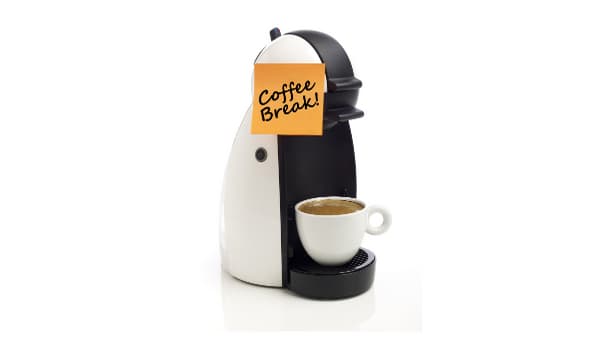
Needs Time To Warm Up
Lastly, one of the common coffee maker problems that can hinder your brew is that your Keurig needs a bit of time to heat up.
Your machine’s boiler needs some time to build up the temperature needed to brew your coffee perfectly.
In some cases, the boiler also builds up pressure. While this is essential for espresso machines, it’s also critical in the brewing process for your Keurig K-Cafe. This also goes for brewers that have an attached milk frother or steamer as well.
Warm-up times can vary from model to model. The simpler the coffee maker, the faster it can warm up the boiler, so if speed is a factor for you, a small single-serve brewer might be better for you.
Stay patient, and you’ll be sipping on your favorite cup of coffee in no time.
Additionally, if your Keurig gets stuck in preheating mode, you can unplug your coffee maker and let it rest for a few minutes before brewing again.
If that fails, some users report that using warm water in the reservoir does the trick as this “jump starts” the boiler. However, Keurig only recommends to only use cold or room temperature water, so if you’re going to try this, do so at your own risk.
My Keurig Doesn’t Turn On / Keurig Keeps Shutting Off
Aside from your machine not brewing coffee, you might find yourself in a position where your Keurig doesn’t turn on, or it shuts down unexpectedly. Super annoying!
For newer models, there might be a glitch in the software of the machine. In some cases, it could be from your power supply, and the problem might just be a feature of your Keurig coffee maker that’s left turned on.
Remember to check and differentiate your machine’s problem before doing any troubleshooting to save you some time and effort.
Keurig Classic On/Off Issues
While the Keurig Classic line might be a bit more simple compared to the touch screen models, some features might slow down your coffee experience.
Some users report that their Keurig automatically turns off, or it turns on randomly. This stems from the inbuilt timer featured in the brewer. This feature might be enabled when you first get your machine or if it’s switched on by someone in your household.
You can find different ways to disable the feature depending on the model, which we will show below:
Keurig Mini: One of the base models from Keurig, this power-saving feature is built into the machine itself which means you won’t have an option to disable it. This also applies to the K-Duo model as well.
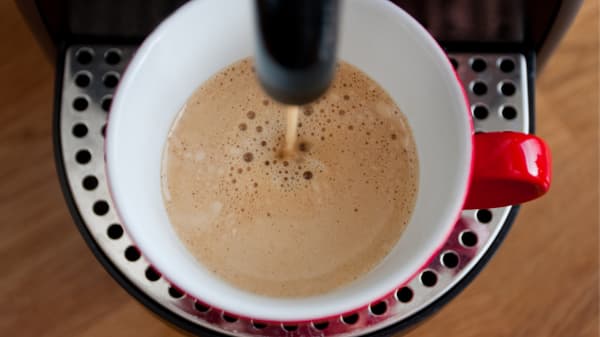
So what’s the solution instead?
You’ll have to take note that the brewer stays turned on for 90 seconds after the brewing cycle. Once it passes the allotted time, you’ll have to press the power button to start it up again. It only takes a few seconds before it’s brew ready as the machine’s boiler remains hot from the previous use.
Keurig Elite: For the Keurig Elite and the K-Select, disabling the auto-shutdown feature is a simple affair. You’ll immediately know if it is enabled if the green indicator for the Auto Off feature is illuminated.
This lets your machine turn off on its own 2 hours after it was last used. If that isn’t your preferred option, you’ll only have to press the Auto Off button which also turns off the green indicator as well.
Special Edition and Platinum: Like the Elite, these models are set to automatically shut down after two hours.
To disable this feature for these models, you’ll have to go through the menu to find the Auto Off programming option. Once you’ve selected, simply press the small cup button multiple times until the screen notifies you that it is turned off.
If any problems still persist after disabling these options, you can contact Keurig customer care to figure out the next step.
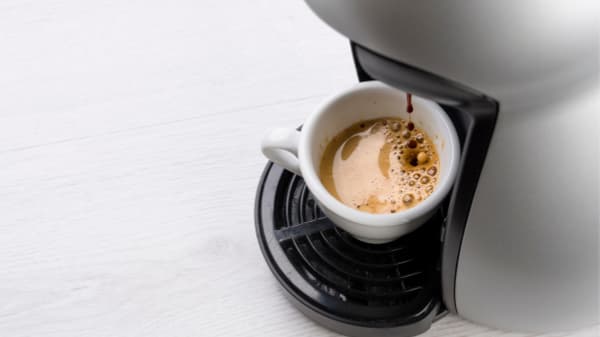
Keurig 2.0 On/Off Issues
“My Keurig 2.0 won’t turn on” is one of the common problems we hear from users with the more expensive Keurig line.
A hassle when all you want is your morning coffee. But, thankfully, it’s a simple fix which should only take you a few minutes at the most.
Usually, once you plug in your Keurig and press the power button, you’ll notice an icon indicating that the machine is working at the lower right corner of the touchscreen. It also comes with a welcome note too.
In some cases, this might not happen, so you’ll have to find out if there is a problem with the Keurig or its display. To check, you can unplug the machine and try it out with a different outlet.
Most newer models also have an automatic startup and shut down feature so it’s best to go through the menus to either disable or enable them.
The water tank can also have a problem when your Keurig shuts down randomly. Make sure to steadily affix the reservoir and make sure it stays in place all through the coffee brew cycle as the machine automatically turns off when the tank is taken off.
If there’s still a problem, it might be time to contact Keurig customer care for them to troubleshoot the problem or if your brewer needs replacement.
My Keurig Coffee Tastes Weird
Ever took a sip from your cup of coffee and found out that it tastes a bit strange from your usual brew?
K-Cup aside, this is also a telltale sign that your Keurig machine needs to be descaled. As we mentioned before, this mineral build-up can greatly change (for the worse) the natural flavors found in your K-Cup coffee.
This is not necessarily a problem exclusive for any Keurig customer. Descaling is essential in all kinds of coffee brewers, whether for home use or a commercial espresso machine.
The quality of the water you’ll use in your brew has an effect on how fast the minerals build up. Using tap water tends to leave more scales inside the brew line compared to filtered water.

You’ll also have to replace the water filters that are lined up in the reservoir every so often. Keurig recommends switching filters every two months to get the most out of your cup.
So when do you descale your machine exactly?
Higher-tier Keurig models tend to give a notification that your machine needs to be descaled. A good rule of thumb to remember is to descale and clean your machine every 3 months.
In my experience, you can also descale your machine for every 100 cups of coffee brewed as the more you use your machine, the more blockages that can happen inside your lines.
My Keurig Leaks Water Around K-Cup
Another hassle you might encounter when brewing is when your Keurig is leaking water inside the K-Cup holder and gasket.
You might be using an incorrectly sized K-Cup, so keep in mind to follow the recommended products for your Keurig machine.
Another factor is that the puncture needle might be full of debris and coffee grounds. This can block the water going in your K-Cup, leading to a messy affair if left unchecked. Like we stated above, you can use a paper clip to clean out the entrance and exit needles before your brew.
One of the more common causes for leaking water stems from the upper gasket of the brewer. Leakages happen when the part is missing or if it was inaccurately installed, and this can also lead to coffee grounds spraying everywhere.
The gasket is attached around the needle that punctures your K-Cups, so you’ll have to make sure that it is seated properly to avoid any spillage.
Ensure that the gasket forms a proper seal between the K-Cup and needle. You can adjust by half an inch down to affix the two parts correctly.
If your gasket is missing, you’ll have to find a replacement which you can inquire from their customer care team or just check Amazon.
My Keurig Is Not Brewing A Full Cup
Another problem with some Keurig users is that the machine makes less coffee than the brew size they’ve chosen when they brew.
This problem comes from several of the factors we’ve already listed above, including clogged water or a debris-filled gasket and puncture needle.
Most home single-serve machines tend to become clogged if you don’t regularly descale. A clogged line means less water that goes through your coffee grounds and to your cup.
An excellent first step is to have your machine do a quick purge by going through a brewing cycle or two using only water.
Once that’s done, you can check to see if there are any improvements in the water flow rate by doing a quick purge into a measuring cup and see if it’s brewing the correct amount of coffee.
If you find that it barely made a dent, you might just have to descale your Keurig.
I know I’ve said it many times, but descaling is extremely important in maintaining your machine’s upkeep. This alone can prevent several of the issues listed above, along with ensuring your machine brews the correct amount of coffee.
You can also check if there’s any stuck debris or grounds on the brew head and clean it with a paper clip as well. If everything goes correctly, you should be able to get the recommended volume of coffee provided by the machine.

